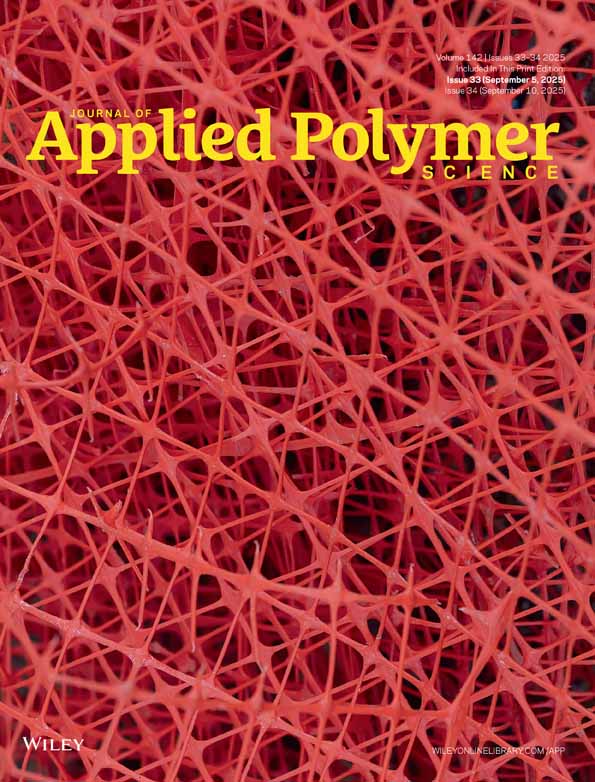On polyethylene chain generation through chemical crosslinking of isotactic polypropylene
Abstract
Crosslinked isotactic polypropylene (iPP) was prepared by reactive blending using dicumyl peroxide and active sulfur. The modified material was characterized by means of several techniques: dynamic mechanical thermal analysis, differential scanning calorimetry, Fourier transform infrared spectroscopy, and nuclear magnetic resonance (13C solid state NMR). Analysis of results using the above techniques confirms that, during the crosslinking process, new ethylenic chains are generated at expenses of the initially present iPP. Furthermore, a balance between the amount of missing iPP and the proportion of newly created polyethylene (PE) is observed. The newly formed PE is semicrystalline, having a degree of crystallinity of about 30%. The amorphous component of the generated PE is thought to contribute to the high impact strength of the crosslinked samples when compared to the unmodified iPP. In light of the results obtained by the different techniques, an attempt to describe the emerging structure of the new crosslinked iPP material is proposed. © 2009 Wiley Periodicals, Inc. J Appl Polym Sci, 2010




